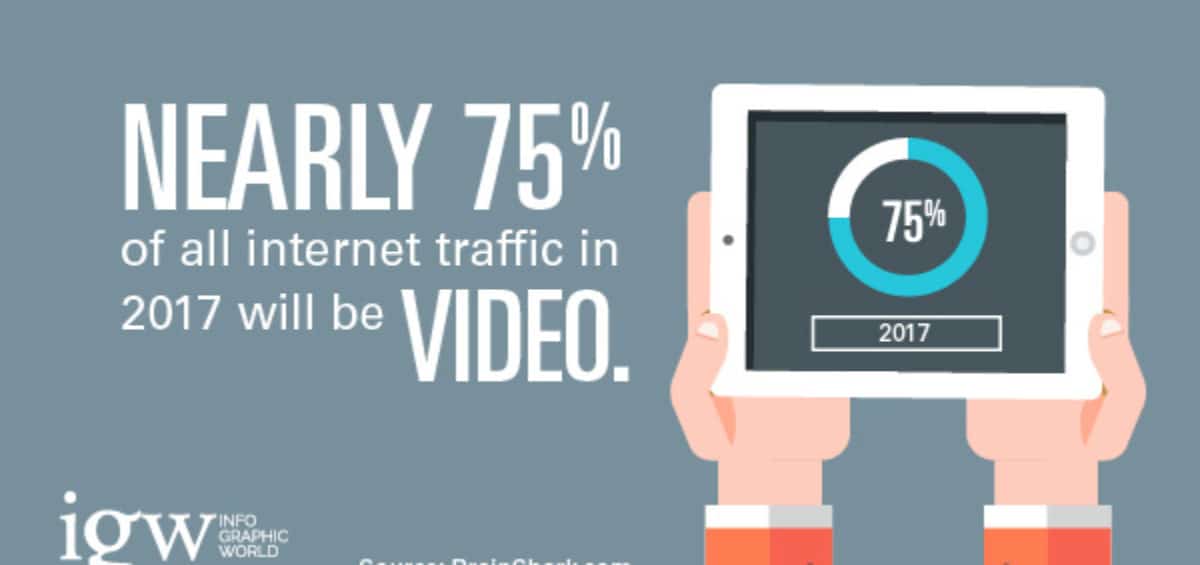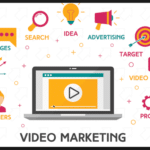As an online marketer, animated videos serve as some of the most powerful tools you have at your disposal. Eye-catching, compelling, and memorable, they can be used to launch a new brand or product, educate or inform your audience, or communicate your company’s message. Furthermore, creating animated video can accomplish these and many other marketing goals much more effectively and at a lower cost than other marketing tools. Consider these statistics:
- Video viewers are more likely to retain information by as much as 95%. In contrast, only 10% of people that read articles, blog posts, and other text-based content manage to retain information effectively.
- Videos are highly-effective for SEO. Sites that have video content are 53 times more likely to show up on the first page of Google’s results in response to a targeted search. If you are trying to get your site a high ranking on Google, hosting video is a great way to achieve your goal.
- Videos increase your social media engagement by as much as 97%. Social media is one of the most active and most rewarding areas for online marketing today. You can improve customer engagement and increase the chances of your content being shared to other sites and users by posting videos on your channel. This could enhance your social media reach and maximize the exposure that you get from your online presence.
What Is Animation?
Animation refers to the process of making drawings or static images pictures appear as moving images. The process typically involves taking snapshots of a series of images, each of which differs slightly from each other. The images are then rapidly played back in sequence, giving the impression of movement.
Most types of animation fall into one of three categories: 2D animation, 3D animation, and stop-motion animation.
2D animation. 2D animation is the most common type of animation. This method traditionally involved displaying a sequence of 2D illustrations rapidly, each of which was painted or drawn by hand on transparent celluloid sheets. This style of animation was popularized by Walt Disney and Warner Brothers studios, among others. Nowadays, video creators use software programs to create the individual illustrations and assemble the finished video. Even with the advent of computer-assisted tools, 2D animation continues to be a popular form to this day.
3D animation. 3D animation consists of three-dimensional representations of geometric data. Using computers and 3D animation software, animators perform a series of calculations to render viewable images. These images are stored for later display or shown in real-time as the calculations are performed. 3D animation produces images with more depth and realism as compared to 2D animation. The effect is striking and visually impressive, with especially realistic lighting and textural rendering.
Stop-motion. Stop-motion animation involves taking snapshots of physical objects and playing them back in sequence to produce a moving image. The process is similar to 2D animation, with the key difference being the use of puppets, clay figures, or paper cutouts instead of celluloid illustrations. This process results in a distinctive look that combines elements of 2D and 3D animation.
Why Animated Video?
The power of animated video as a marketing tool lies in its ability to convey ideas effectively. If you have a fairly complex message that is difficult to communicate, presenting it in an animated video could make it much easier for your audience to absorb and retain.
Animation also strongly appeals to our emotions and sense of nostalgia. Most people grew up watching cartoons on TV and in cinema, so animated videos give them a familiar experience to latch on to. By presenting content via an easily relatable medium, audiences will be much more receptive to your message.
Animated videos are often much cheaper to produce than live-action videos as well. Because you don’t have to spend on costly stage sets, location shooting, and human actors, you can produce impressive videos at a fraction of what a live-action video would cost.
Exactly How Powerful Is Video Marketing?
Video marketing can be a highly-effective tool for attracting site visitors, increasing click-through rates, and boosting sales. As many as 95% of online shoppers have purchased products after viewing an explainer video. These types of videos are especially effective for simplifying complex messages, making them essential tools for increasing awareness of the benefits and functions of specific products.
Videos are also effective email marketing devices. Studies show that emails with the word “video” in the subject line are 19% more likely to be opened by receivers. Video content sent via email also increases click-through rates by 65% and reduces instances of unsubscribing by as much as 26%.
Testimonial videos are especially effective when used for online marketing. Whether you present them as traditional testimonials or as customer reviews incorporated into case studies, they can help enhance your brand’s trustworthiness and credibility. Testimonial videos can also be used to demonstrate product features and show their benefits to actual customers.
Create Your Animated Video Marketing Strategy
When planning your video marketing strategy, it is a good idea to consider the channels and platforms you will use to deliver your videos. Will you be sending videos out via e-mail or posting them on your social media channels? Are you going to develop videos specifically for YouTube or host them on your website? The answers to these questions will determine the most appropriate video marketing approach.
You should decide on the social media channels to use depending on your audience’s browsing habits and where they tend to hang out. You should also consider how you will promote videos hosted on your website so that you can maximize your reach.
Identify your audience
Getting to know your audience is an essential marketing technique for many reasons. It helps you determine the browsing and viewing preferences of your potential customers and what makes them ‘tick.’ Using this information, you can then tailor your videos’ tone, length, and characters to their tastes. By gaining familiarity with your target demographics’ online habits and preferences, you will be better able to create video content that connects with them.
Decide on the best types of animated video
Not all types of animated videos have the same effect. You will need to define your marketing goals and develop suitable strategies to achieve them. These goals and strategies will help you determine the most appropriate type of animated video to create. If you want to communicate a complex idea or procedure, for example, you might want to create an animated infographic or whiteboard-format video. If your goal is to excite your audience and inspire them to action, a 3D animated video might be more effective.
Write the script
Like any video production, the effectiveness of an animated video often hinges on the script. Working from a script will help you maintain a smooth and cohesive flow and prevent you from going off on a tangent. Ideally, you will want to have a compelling introduction and present information in a logical sequence of steps. You can then finish your video with a satisfying pay-off or conclusion.
Pay particular attention to your tone and flow. As with deciding on the type of animated video to create, you should tailor the tone and flow according to the tastes and preferences of your target audience and the message you want to convey.
Create the storyboard
A storyboard is a visual representation of the main scenes of your video. It provides a sort of blueprint that enables you to visualize the video’s flow and sequence. Storyboards don’t necessarily contain every shot of the production. Instead, they show the most significant events in the video, along with important transition points. By providing a rough guide for how the completed video will look like, you will be able to develop scenes for maximum impact, arrange sequences for optimal flow, and create a more effective video.
Plan the audio elements
The audio component of your video is equally important. Although animated videos rely mainly on the visuals, strategic use of music and sound effects can really bring them to life. High-quality voiceovers from professional voice talents will also enable you to deliver your message in a way that resonates with your audience.
Animate and produce the video
The only thing left to do at this point is to actually produce the video. Although we’ve laid out the steps on how to put together an animated video, the actual process isn’t as easy as it may seem. It takes a considerable amount of time and effort to create even a 30-second video, and not every company has the skilled personnel needed to pull it off. Even if you have access to software that lets you create basic animated videos, you will still have to devote hours of your time that could be used more productively for other marketing-related tasks.
A more feasible alternative would be to hire a full-service marketing team to create your animated video. This ensures that you get a higher quality video, and leaves you more time to promote the content and work on other equally important areas of your marketing campaign.






